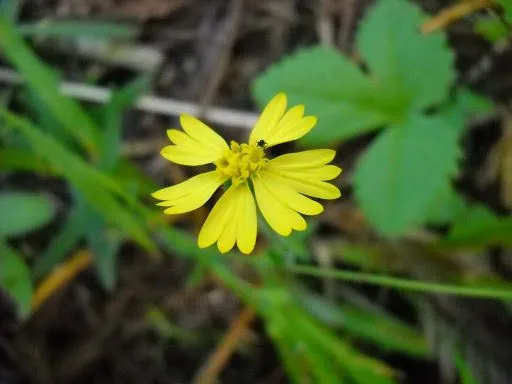
Author: Nutt.
Bibliography: Trans. Amer. Philos. Soc., ser. 2, 7: 388 (1841)
Year: 1841
Status: accepted
Rank: species
Genus: Anisocarpus
Vegetable: Unknown
Observations: W. Canada to W. U.S.A.
Woodland madia, scientifically known as Anisocarpus madioides, is a captivating plant species belonging to the Asteraceae family. A remarkable feature of this plant is its ability to thrive in diverse environments, found extensively from western Canada stretching into the western regions of the United States. Documented initially in 1841 in the Transactions of the American Philosophical Society by Nuttall, Anisocarpus madioides has been of keen interest to botanists and plant enthusiasts alike.
Known for its resilience and adaptability, the Woodland madia typically flourishes in forested areas, embedding itself as a characteristic species within these ecosystems. It often adorns woodland landscapes with its vibrant, daisy-like flowers, which bring splashes of color to the earthy surroundings. These flowers, recognized by their distinctive yellow petals and dark central disc, not only add aesthetic value but also contribute ecologically by attracting a variety of pollinators.
Ecologically, the presence of Woodland madia holds significant value. Its growth supports the ecosystem by offering food sources for insects, birds, and other small wildlife, thus maintaining the ecological balance and promoting biodiversity. Moreover, its adaptability to different habitats within its range underscores its evolutionary success and ecological importance.
In terms of cultivation, Woodland madia prefers well-drained soils and can often be found in areas with partial to full sunlight. Gardeners and conservationists value it for its minimal maintenance requirements and its contribution to local flora diversity. It’s a wonderful choice for naturalistic landscapes and restoration projects aiming to recreate native plant communities.
Understanding Anisocarpus madioides provides insight into the remarkable biodiversity of the Asteraceae family and the intricate roles plants play within their habitats. The broad distribution of Woodland madia from western Canada to the United States underscores its robustness and the crucial role such species play in sustaining healthy and vibrant ecosystems.
In summary, Woodland madia (Anisocarpus madioides) stands as a botanical marvel within the Asteraceae family, admired for its ecological contributions and its resilience across a broad geographic range. Its striking appearance and ecological significance make it an integral part of the woodland landscapes, revered both in the natural world and among those who study and cultivate native plant species.
Eng: woodland madia, woodland tarweed
Fra: anisocarpe faux-madia
En: Woodland madia, Woodland tarweed, Tarweed
Fr: Anisocarpe faux-madia
Taken May 26, 2014 by EOL − Marek (cc-by-nc)
Taken Apr 26, 2015 by EOL − Don Loarie (cc-by)
Taken Apr 26, 2015 by EOL − Don Loarie (cc-by)
Taken Apr 27, 2015 by EOL − Di (cc-by-nc-sa)
Taken Apr 9, 2015 by EOL − Di (cc-by-nc-sa)
© copyright of the Board of Trustees of the Royal Botanic Gardens, Kew.
Family: Myrtaceae Author: (F.Muell.) K.D.Hill & L.A.S.Johnson Bibliography: Telopea 6: 402 (1995) Year: 1995 Status:…
Family: Rubiaceae Author: Pierre ex A.Froehner Bibliography: Notizbl. Bot. Gart. Berlin-Dahlem 1: 237 (1897) Year:…
Family: Sapindaceae Author: Koidz. Bibliography: J. Coll. Sci. Imp. Univ. Tokyo 32(1): 38 (1911) Year:…
Family: Asteraceae Author: A.Gray Bibliography: Pacif. Railr. Rep.: 107 (1857) Year: 1857 Status: accepted Rank:…
Family: Fabaceae Author: Medik. Bibliography: Vorles. Churpfälz. Phys.-Ökon. Ges. 2: 398 (1787) Year: 1787 Status:…
Family: Aspleniaceae Author: (Cav.) Alston Bibliography: Bull. Misc. Inform. Kew 1932: 309 (1932) Year: 1932…